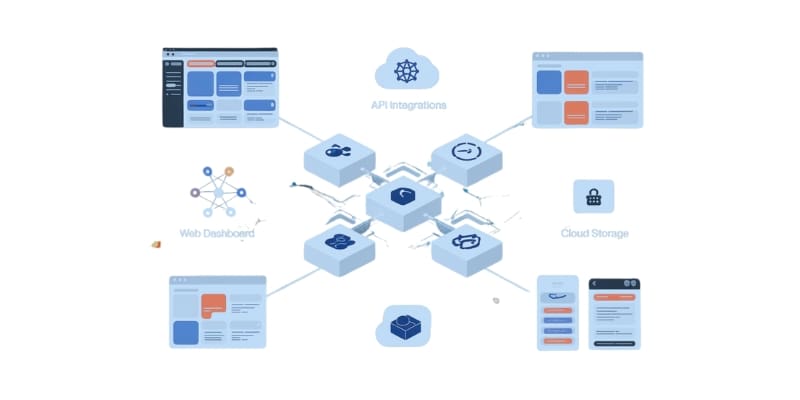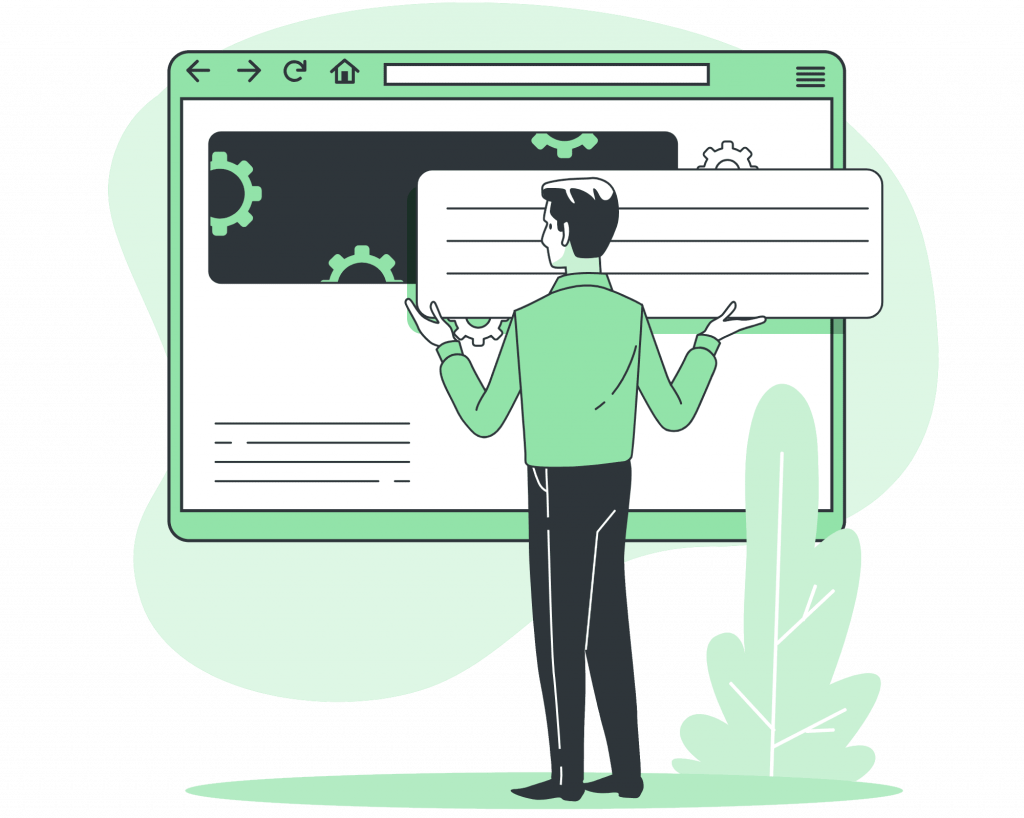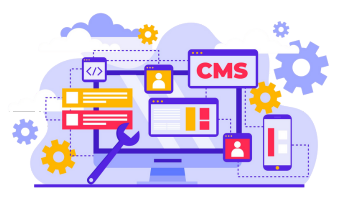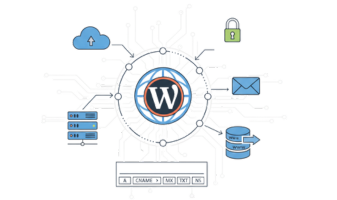Introduction to Headless CMS
A headless CMS (Content Management System) has rapidly become a popular solution for managing content in modern web development. Unlike traditional CMS platforms, which have both the frontend (display layer) and backend (content management layer) tightly coupled, a headless CMS separates the two. This system delivers content via APIs (Application Programming Interfaces) to any frontend. Also it can power a website, mobile app, or IoT device.
Separating the frontend from the backend makes it easier to scale and customize. This makes a headless CMS ideal for many use cases, especially in eCommerce.
What is a Headless CMS?

It is a content management system that allows businesses to store, manage, and deliver content. In traditional CMS platforms like WordPress, the backend for managing content and the frontend for displaying it are closely connected. In contrast, a headless CMS separates the backend from the frontend, making the content “headless.”
This setup allows content to be delivered through APIs to any number of front-end systems. It could be a website, a mobile app, or any other platform capable of receiving content via APIs. The flexibility of this system makes it ideal for modern, multi-platform content delivery.
For eCommerce businesses, this means you can deliver product listings, descriptions, media, blog posts, customer reviews, and more. You can do this across multiple devices and channels, all from a single content repository. This setup streamlines content management and improves your ability to manage and distribute content seamlessly.
Traditional vs. Headless vs. Hybrid CMSs – What Makes Them Different
Regular CMS solutions join content & design, making it simple for non-programmers to change web pages conveniently. This confines content delivery to websites and specific programming languages.
However, headless CMSs store content independently, using APIs that enable developers to work in any programming language, as well as to deliver across a variety of platforms.
Hybrid CMSs offer editorial ease matched with development flexibility. Editors create content while programmers build customized experiences for multiple platforms.
Choose a CMS based on project needs, complexity, and team tech skills.
Comparison of Traditional CMS vs Headless CMS
For a detailed explanation, watch this YouTube video covering comparison between traditional and headless CMS.
| Feature | Traditional CMS | Headless CMS |
|---|---|---|
| Architecture | Combines back-end and front-end into one system. | Separates back-end content from front-end presentation layer. |
| Flexibility | Offers limited flexibility for new platforms. | Provides high flexibility for multi-platform content delivery. |
| Content Delivery | Delivers content primarily to websites. | Delivers content to websites, mobile apps, and smart devices. |
| Programming Language | Supports specific programming languages (e.g., PHP). | Supports any programming language through APIs. |
| Ease of Use | Offers WYSIWYG editors for non-technical users. | Requires developer expertise for custom front-end interfaces. |
| Scalability | Scales poorly due to integrated architecture. | Scales easily with distributed systems and API support. |
| Development Needs | Requires minimal developer support for basic websites. | Requires developer involvement for building front-end designs. |
| Customization | Allows limited customization through templates. | Offers complete customization using APIs and frameworks. |
Headless CMS for eCommerce

It is a perfect fit for eCommerce websites. Here’s why:
1. Flexibility and Customization
One of the most significant advantages of using it is the ability to fully customize the frontend of your website. In traditional CMS systems, you’re often restricted by the pre-built templates and themes available. It decouples the frontend and backend. This lets developers create unique, custom designs and experiences tailored to their needs.
For example, you can design a completely custom eCommerce website using modern technologies like React, Vue.js, or Angular. You can use it to manage and organize content. This flexibility allows you to craft a user interface (UI) that is unique to your brand. You still benefit from the powerful content management features of the CMS.
2. Multi-Channel Content Delivery
A headless CMS allows you to deliver content across multiple digital channels. With traditional CMS platforms, content is often tied to a specific frontend, like a website. A headless CMS allows you to deliver content to any platform or channel. This could be a website, mobile app, social media platform, or even a smart device.
For example, imagine an eCommerce business that wants to display product content on their website, mobile app, and smart device. With this, you can create and manage content once in the backend. Then, you can deliver it across all these platforms seamlessly.
3. Scalability
As your eCommerce store grows, your content needs will evolve. it scales with your business. The backend stores content and delivers it through APIs, allowing your infrastructure to grow independently of the frontend. Whether your website experiences a spike in traffic or you expand to new digital platforms, it can handle the increase in content volume. It will do so without sacrificing performance.
4. Improved Performance
Since a it delivers content through APIs, content is typically served faster than with traditional CMS platforms. By using APIs, the backend processes data more efficiently and serves it directly to the frontend. This means faster load times for your eCommerce website.
In a world where speed is essential to the customer experience, having a fast eCommerce site is crucial. It helps reduce bounce rates and improves conversion rates.
5. Future-Proof Technology
The world of eCommerce is constantly evolving. New technologies, platforms, and devices are emerging all the time. It future-proofs your business by allowing you to easily integrate with new tools and technologies. You can adopt voice commerce, integrate with social media platforms, or develop new front-end designs. It can easily accommodate these changes. For more info you can check Headless CMS Benefits and Flexibility
What is a Hybrid CMS?

A hybrid CMS offers the flexibility of a headless system while incorporating traditional frontend management features. It is ideal for businesses that need the power of a headless CMS but also want some built-in functionality for content display. This is especially helpful if they don’t want to develop a completely custom frontend from scratch.
A hybrid CMS separates the backend from the frontend. However, it still includes some pre-configured templates or themes. This offers more flexibility than a traditional CMS while keeping ease of use for content creators. They may not want to fully embrace headless architecture.
For example, you might use a hybrid CMS to manage your content in a headless way. However, you can still use pre-built templates for your eCommerce store. Developers get more control while content creators enjoy ease of use.
Understanding Headless CMS SaaS
A headless CMS SaaS (Software as a Service) refers to cloud-based headless CMS platforms. These platforms are hosted by third-party providers. They offer businesses the benefits of headless architecture without worrying about hosting or server management.
Some of the most popular headless CMS SaaS platforms include Strapi, Contentful, and Sanity. These platforms are highly scalable. They offer automatic updates, robust security, and easy integration with third-party tools. The cloud-based nature of headless CMS SaaS also makes it easy to manage and deliver content across different regions and devices.
Can You Use WordPress as a Headless CMS?
Yes, WordPress works well as a headless CMS to manage content. Traditionally, WordPress is considered a monolithic CMS. But it can be used as a headless CMS by decoupling the frontend and backend. By using the WordPress backend to manage content and delivering it through APIs to custom frontends, businesses can enjoy the benefits of headless architecture. They can still use WordPress’s robust content management features.
For eCommerce websites that use WooCommerce, integrating headless WordPress with WooCommerce is an excellent solution. It allows for managing content and products while allowing custom frontend development using modern JavaScript frameworks.
Serverless Headless CMS: A Growing Trend
A serverless headless CMS uses a cloud-based serverless architecture to manage content delivery. No need to handle servers or infrastructure scaling. Serverless platforms automatically scale as your website traffic increases. This ensures that your eCommerce website can handle high volumes of visitors without any issues.
The serverless model offers cost efficiency because you only pay for the computing resources you use. This makes it an ideal solution for startups and growing eCommerce businesses.
Cloud-Based Headless CMS for eCommerce
A cloud-based headless CMS provides a scalable, secure, and efficient solution for managing content in the cloud. By leveraging cloud technology, a cloud-based headless CMS enables businesses to access their content from anywhere. It helps scale as needed and integrates with other cloud-based tools.
For eCommerce businesses, using a cloud-based headless CMS ensures faster content delivery, improved security, and easy scalability. Whether you’re managing product listings, customer data, or marketing content, a cloud-based headless CMS can handle all aspects of your content management needs.
What is Headless CMS Design?
Headless CMS design refers to the visual and functional aspects of the frontend. Developers and designers have the freedom to create the frontend independently of the CMS backend.
Since a headless CMS only handles the backend content management, developers and designers have full control over the frontend design. They can use any technology, framework, or tool to create a user experience that fits the brand and goals of the eCommerce store.
This flexibility allows businesses to create unique, customer-focused designs without the limitations of a traditional CMS. Whether it’s creating a minimalist design for a product catalog or a dynamic, interactive eCommerce experience, headless CMS design provides limitless possibilities.
Using it for Your eCommerce Site
If you’re considering it for your eCommerce website, there are several key features to look out for:
- API-Based Content Delivery: Ensure that the CMS offers robust APIs (both RESTful and GraphQL) for delivering content to various devices and platforms.
- Customizable Content Types: Your CMS should allow you to create and manage custom content types, such as product listings, blogs, reviews, and customer profiles.
- Multi-Channel Support: The CMS should support content delivery across multiple channels, including websites, mobile apps, and social media platforms.
- Scalability: It ensures your CMS handles growth, increased traffic, and more content.
Key Benefits and Strategic Role of Headless CMS in 2025
In 2025, delivering a seamless digital experience requires an omnichannel approach. Businesses must serve content consistently across multiple platforms, from websites and mobile apps to social media and IoT devices. A headless CMS solution makes this possible by separating content management from presentation, allowing you to create a flexible content model that supports your business needs.
Unlike a traditional content management system, a headless approach improves the experience across all touchpoints. It empowers content teams to focus on effective content structure and content strategies without being limited by frontend constraints. This headless content management approach gives you the freedom to go headless and deliver content across multiple platforms from one central system.
When you use headless CMS, you gain the flexibility of a headless content management system that fits perfectly into your digital ecosystem. The benefits of a headless CMS include faster updates, better scalability, and a future-ready digital strategy. Whether integrating with static site generators or optimizing for SEO, headless architecture ensures that your digital content can be delivered quickly and reliably.
With a decoupled CMS, you can serve content anywhere. This model separates content from design, so you can manage content without worrying about how it will be displayed. It works across websites, mobile apps, and other channels, keeping content in one secure location. By managing your content infrastructure this way, your content is stored efficiently and updated instantly.
While CMS platforms often tie content to specific templates, the right headless CMS keeps content in one place and allows content management from presentation to be fully independent. This means your content is managed with maximum flexibility. Adopting a headless CMS is more than a tech upgrade—it’s an approach to content management that separates content management from presentation, helping you scale and adapt to new channels effortlessly.
Conclusion
A headless CMS offers tremendous benefits for eCommerce businesses looking to improve their website’s performance, flexibility, and scalability. Whether you choose a cloud-based headless CMS, serverless CMS, or a hybrid CMS, this architecture ensures that your content can be delivered seamlessly across multiple channels. It allows complete control over design and functionality.
By using a headless CMS, you can future-proof your eCommerce website and deliver a superior customer experience. If you need assistance in implementing this technology for your business, Creation Wave LLC is here to help. We specialize in developing custom website solutions for eCommerce, ensuring that your website stays ahead of the competition.
Let us help you build a scalable, flexible, and efficient eCommerce store that will serve your business for years to come. Reach out today to learn more about how we can assist with your website development




